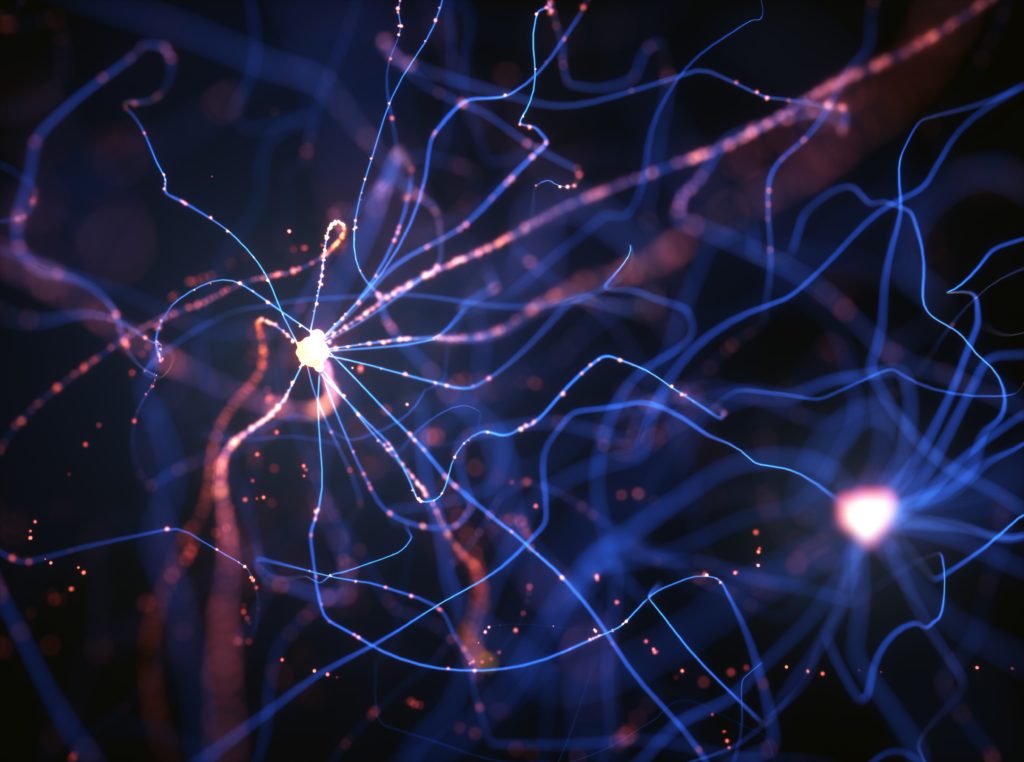Quick Hits
Daily brief research updates from the cognitive sciences

There are different types of dark matter in the brain. Matter that is often little researched or unknown to different population groups. I have written previously about glial cells and their contribution to just about everything, something neuroscientists know a lot about, to electrical neurons, that have been vastly under researched.
But now some researchers have made some discoveries in another area, and that is that of silent synapses. Synapses are the connections between your brain cells. The current understanding is that as you learn, develop new skills, synapses connect, and strengthen and build the networks in your brain – this is how your brain is continually growing and changing. However, these would always be part of a network. Silent, inactive synapses have been seen in the brains of developing mice so it was thought they played a key role in the developing brain but not in adults.
However, in an unexpected discovery MIT researchers have found silent synapses at levels 10 times higher than expected. The researchers were not actually looking for silent synapses but trying to measure neurotransmitter receptors on the branches of neurons. Some of these branches and connections, known as filopodia, are extremely fine and small and are difficult, or impossible, to see with standard imaging techniques.
On discovering these in such high quantities they then proceeded to investigate whether they were indeed silent synapses by attempting to stimulate these with a combination of a neurotransmitter and an electrical stimulus. They found that indeed these were silent but could grow into active synapses much quicker than by altering mature synapses.
That’s good news and this explains how we can learn things quicker – having silent synapses allows rapid learning and being able to build new memories without building whole new synapses.
Whether this is different between different people is another question – but I am hoping I have a bunch of silent synapses waiting to spring into action when I engage with new material – such as writing this article – go silent synapses, go!

Andy Habermacher
Andy is author of leading brains Review, Neuroleadership, and multiple other books. He has been intensively involved in writing and research into neuroleadership and is considered one of Europe’s leading experts. He is also a well-known public speaker, speaking on the brain and human behaviour.
Andy is also a masters athlete (middle distance running) and competes regularly at international competitions (and holds a few national records in his age category).
References
Vardalaki, D., Chung, K. & Harnett, M.T.
Filopodia are a structural substrate for silent synapses in adult neocortex.
Nature, 2022
DOI: 10.1038/s41586-022-05483-6
More Quick Hits
Learning at double-speed?
Quick HitsDaily brief research updates from the cognitive sciences ouldn’t it be great if we could learn things double speed? Well, maybe we can. At least according to a study out of the University of California. During the pandemic many...
The “drunken monkey” hypothesis – proven
This had to be a story I covered – monkeys and alcohol sounds too good to pass up. But this is also linked to the “drunken monkey” hypothesis: that humans developed their love for alcohol in earlier primitive times accidentally, and then intentionally, eating fruit...
The Newly Discovered Bias That Makes Us Think We Are More Diverse Than We Are
A few weeks ago I reported on some newly discovered ways we are biased namely that we consider generic terms such as “people” as equivalent to “men” rather than men and women. This was specifically focused on gender bias but this latest piece recently published shows...
Self-awareness of autism leads to better quality of life
Autism has become a well-known diagnosis in recent years. Though some people seem to be against this sort of labelling, and the general increase in different label of mental conditions, a study out of the University of Portsmouth shows why this is actually a good...
Optimal sleep improves your brain, mental, and physical health - and it’s not as much as you think
I’ve reported multiple times on sleep and how it affects just about everything form cognitive performance, to brain plasticity, to physical performance, to mental health, and to metabolism. The question...
No change for a century – children’s backgrounds still predict the same educational outcomes
Educational opportunities have changed dramatically for children over the last century – schools have changed, and college and university admissions have grown. Or so we might think at least. But according to a study out of the University of York, that is not the...






